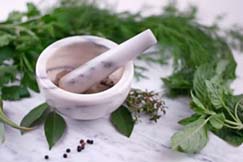What Is Apple Cider Vinegar?
Vinegar is a product of fermentation. This is a process
in which sugars in a food are broken down by bacteria and yeast. In the
first stage of fermentation, the sugars are turned into alcohol. Then, if
the alcohol ferments further, you get vinegar. The word comes from the
French, meaning "sour wine." While vinegar can be made from all sorts
of things -- like many fruits, vegetables, and grains -- apple cider vinegar
comes from pulverized apples.The main ingredient of apple cider vinegar, or any
vinegar, is acetic acid. However, vinegars also have other acids,
vitamins, mineral salts, and amino acids.
Apple Cider Vinegar: Cure for Everything?
Apple cider vinegar treats numerous diseases. To name a
few, it's supposed to reverse aging, ease digestion, and wash toxins from the
body.
They
include cures for allergies (including pet, food and environmental), sinus
infections, acne, high cholesterol, flu, chronic fatigue, candida, acid reflux,
sore throats, contact dermatitis, arthritis, and gout. Apple Cider Vinegar also
breaks down fat and is widely used to lose weight. It has also been reported
that a daily dose of apple cider vinegar in water has high blood pressure under
control in two weeks!
Steps for Making Cider Vinegar
The following steps must be followed to make a high-quality cider vinegar:1) Make a clean cider from ripe apples.
2) Change all of the fruit sugar to alcohol. This is called "yeast fermentation."
3) Change all of the alcohol to acetic acid. This is called "acetic acid fermentation."
4) Clarify the acetic acid to prevent further fermentation and decomposition.
Step 1--Making Cider
Cider is made from the winter and fall varieties of apples (summer and green apples do not contain enough sugar). Fruit should be gathered, and then washed well. Crush the fruit to produce apple pulp and strain off the juice. Use a press or cheesecloth for straining.Adding yeast to activate fermentation is not essential, but will speed up the process. Special cultivated yeasts are available for this purpose at wine-making shops and biological labs--bread yeasts are not recommended. To make a starter, crumble one cake of yeast into one quart of cider. This makes enough starters for 5 gallons of cider; double the recipe proportionately when making more.





